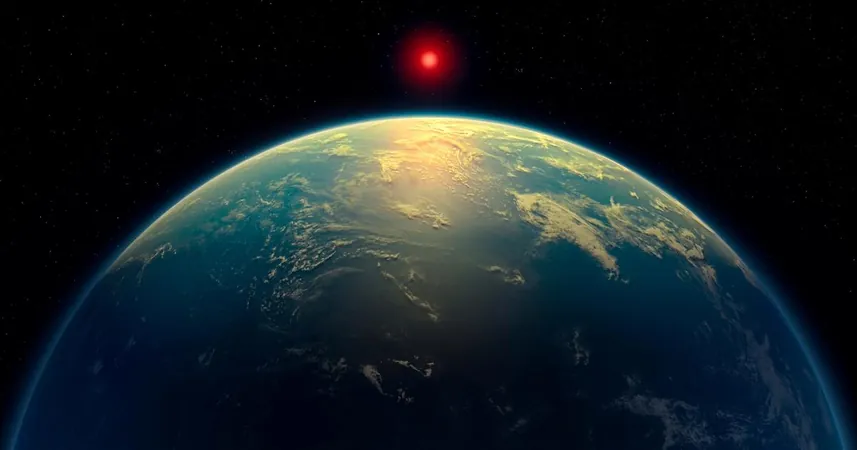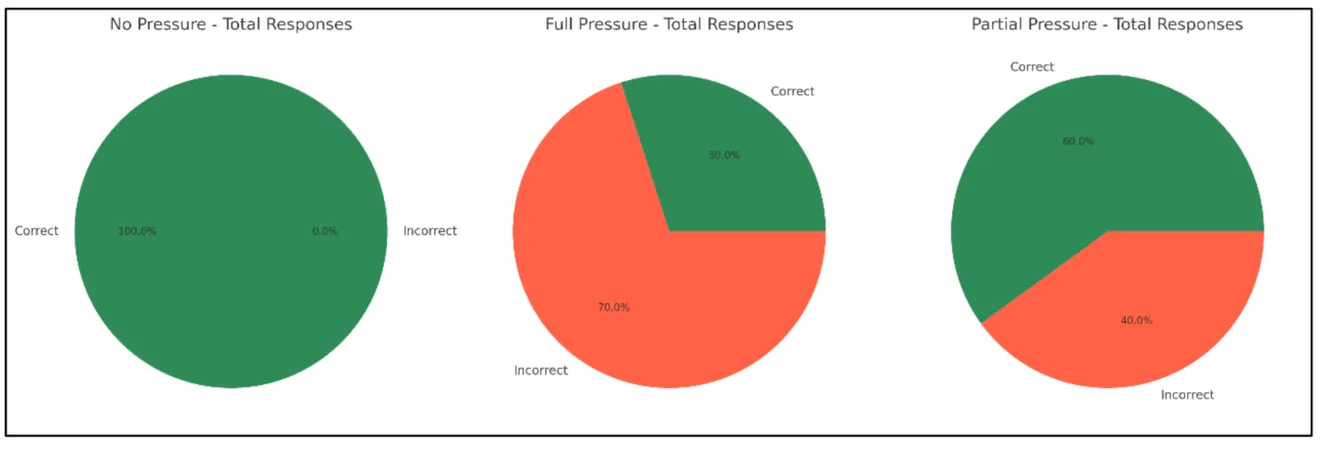
Is Life Possible on K2-18b? Unveiling the Secrets of This Distant Exoplanet
2025-04-21
Author: Olivia
Astounding Discovery Points to Possible Life Beyond Earth
In a groundbreaking revelation on April 17, astronomers from the University of Cambridge have uncovered compelling evidence suggesting the existence of life beyond our planet. Using the cutting-edge James Webb Space Telescope, they detected atmospheric hints that microbial life may inhabit K2-18b, an exoplanet located in the constellation Leo.
What Could Be Living on K2-18b?
While we won't be finding little green aliens zipping about in UFOs, the potential life on K2-18b is exciting nonetheless. The prevailing hypothesis suggests that if any life exists, it would likely be simple microorganisms, similar to phytoplankton on Earth.
Understanding Exoplanets and Their Significance
Exoplanets are celestial bodies orbiting stars outside our own solar system, with over 5,800 confirmed as of now. Some, known as rogue planets, drift through space without orbiting a star. K2-18b has captured the attention of scientists since its discovery in 2015, classified as a Hycean exoplanet due to its hydrogen-rich atmosphere and possible oceanic surface.
Why K2-18b is Stirring Interest Among Astronomers
This ocean-covered world circles a red dwarf star more than 120 light-years from us and has been recognized as one of the prime candidates for harboring extraterrestrial life. Initial signs indicating the presence of water were found using the Hubble Space Telescope in 2019, but a more recent study using Webb has revealed traces of carbon-bearing molecules, such as methane and carbon dioxide, in its atmosphere.
What Makes K2-18b So Special?
K2-18b's unique environment places it in what scientists call the 'habitable zone'—a region around a star with the right conditions for liquid water to exist, crucial for life. These planets are often referred to as "Goldilocks zones,” where temperatures are perfectly balanced.
K2-18b: A Giant Among Planets
This incredible exoplanet is 8.6 times larger than Earth, with a radius 2.6 times that of our planet, suggesting it has a significant mantle of high-pressure ice. Astronomers categorize it as a "sub-Neptune” planet, a type yet to be found in our solar system but deemed common in the galaxy.
The Path to Discovery: How Scientists Found Clues of Life
The latest findings were made by analyzing starlight filtering through K2-18b's atmosphere as it passed in front of its star. This method shed light on the gases present, including sulfur-based compounds typically associated with life forms on Earth, primarily microbes.
Where Else Are We Looking for Life?
In our solar system, only Earth, Mars, and Venus sit in the habitable zone. Currently, NASA's robotic missions on Mars are exploring the planet's surface for potential signs of past life, while the Europa Clipper spacecraft, set to arrive at Jupiter’s moon Europa in 2030, will investigate further for evidence of submerged water.
The Hunt for Extraterrestrial Intelligence
Organizations like the Search for Extraterrestrial Intelligence Institute (SETI) are at the forefront of exploring the universe for signs of life. They conduct groundbreaking work in astrobiology, signal detection, and public education, eager to unravel the mysteries of the cosmos.
Have Aliens Ever Visited Us?
Despite countless reports of UFOs and unusual phenomena, no credible evidence exists that any aliens have ever visited Earth. Michigan ranks high for sightings, demonstrating the ongoing human fascination with the possibility of extraterrestrial beings.
As we push the boundaries of our knowledge with technologies like the James Webb Space Telescope, the search for life in the cosmos continues to captivate and inspire, driving humanity’s quest to understand our place in the universe.









 Brasil (PT)
Brasil (PT)
 Canada (EN)
Canada (EN)
 Chile (ES)
Chile (ES)
 Česko (CS)
Česko (CS)
 대한민국 (KO)
대한민국 (KO)
 España (ES)
España (ES)
 France (FR)
France (FR)
 Hong Kong (EN)
Hong Kong (EN)
 Italia (IT)
Italia (IT)
 日本 (JA)
日本 (JA)
 Magyarország (HU)
Magyarország (HU)
 Norge (NO)
Norge (NO)
 Polska (PL)
Polska (PL)
 Schweiz (DE)
Schweiz (DE)
 Singapore (EN)
Singapore (EN)
 Sverige (SV)
Sverige (SV)
 Suomi (FI)
Suomi (FI)
 Türkiye (TR)
Türkiye (TR)
 الإمارات العربية المتحدة (AR)
الإمارات العربية المتحدة (AR)